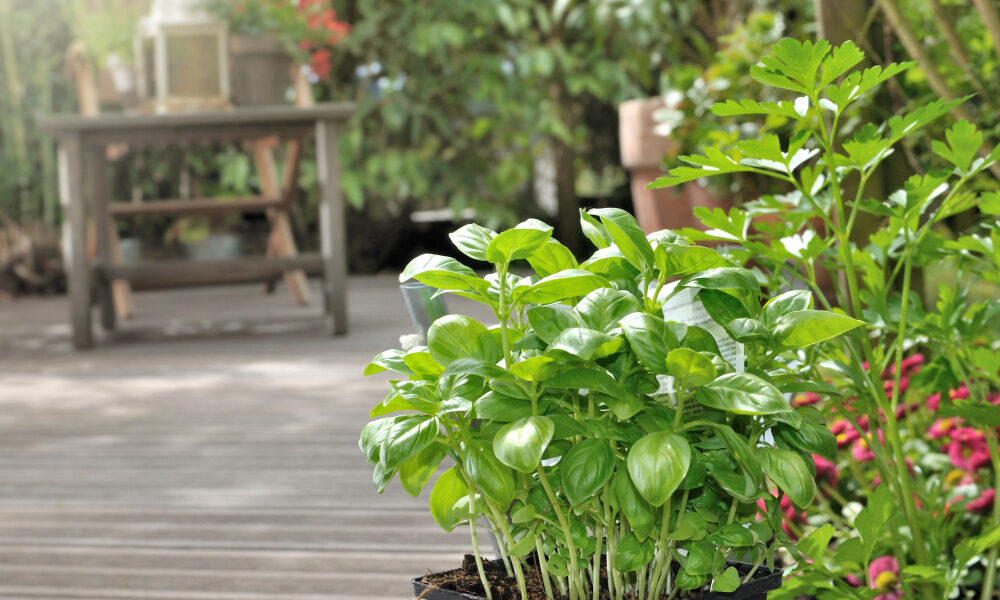Imagine enjoying your morning coffee while sitting on your terrace, surrounded by vibrant flowers and fresh vegetables. This isn’t just for rural areas or luxury living. It’s achievable, enjoyable, and eco-friendly. Nowadays, many city dwellers are getting into terrace gardening, bringing a bit of nature to their urban lives. Whether you’re a beginner in gardening, an environmental enthusiast, or simply want to bring some greenery to your urban home, this article is the perfect guide.
Let’s explore easy starting tips, and common challenges, that will help you become a skilled terrace gardener.
The Importance of Terrace Gardening
In an age where we’re constantly combating the harmful happenings of climate change, embracing eco-friendly practices like terrace gardening can play a significant role. Not only does it reduce carbon footprint by mitigating urban heat effects, but it also beautifies your living space, providing a serene, natural retreat amidst the concrete jungle.
It can greatly contribute to your mental health. The simple act of tending to plants, watching them grow, and reaping the fruits of your labour can be a therapeutic process. It can bring down stress and provide a sense of accomplishment, teaching your patience and nurturing your bond with nature.
Moreover, it can be the gateway to organic living. It allows you to grow fruits, vegetables, and herbs free from harmful chemicals and pesticides. This not only ensures the health and well-being of your family but also adds to the sustainability quotient of your lifestyle.
Starting Your Terrace Garden: Basic Steps
Starting out a terrace gardening endeavour may seem daunting at first, but with a little bit of planning and preparation, it can be easier. Start by assessing the space available on your terrace. Take into consideration the sunlight availability, wind direction, and whether your terrace can bear the weight of the garden.
Once you’ve evaluated the conditions, it’s time to design your garden. Sketch out a rough plan of where you would want to place the plants, considering their sunlight and shade requirements. It’s also important to leave enough space for you to move around comfortably.
Next, prepare your pots or containers. Make sure they are equipped with adequate drainage holes to avoid excess water accumulation. You can also consider using lightweight containers or grow bags to reduce the weight on your terrace. Fill them with a mix of garden soil, compost, and coco peat to provide a nutrient-rich environment for your plants.
Selecting the Appropriate Plants for Your Terrace Garden
Selecting the appropriate plants is essential for the prosperity of your terrace garden. Select plants based on the amount of sunlight your terrace receives. For instance, if your terrace gets enough sunlight, you can opt for sun-loving plants like tomatoes, cucumbers, and roses. On the other hand, if your terrace is mostly in shade, you can go for shade-loving plants like ferns and begonias.
It’s also important to choose plants based on your interest and commitment level. If you’re a beginner, start with easy-to-grow plants like herbs, lettuce, or marigolds before moving on to more demanding crops. Also, consider growing plants that you and your family enjoy. There’s nothing more satisfying than eating a salad made from your home-grown lettuce or sipping on tea flavoured with your own mint leaves.
Finally, consider the aesthetics of your garden. Mix and match different types of plants to create an appealing landscape. You can intersperse tall plants with shorter ones, or combine flowering plants with edible ones to create a visually pleasing and functional terrace garden.
Pivotal Gardening Tools for Beginners
Having the right tools can make your terrace gardening experience much easier and more enjoyable. A gardening trowel for digging and planting, a pruner for trimming and shaping your plants, a watering can or hose with a gentle spray option, and a pair of gloves to protect your hands.
A soil testing kit can be a great asset, allowing you to understand the pH and nutrient levels in your soil and adjust them accordingly. Investing in a good-quality compost bin will let you create your own organic fertiliser from kitchen waste. This not only reduces your garbage output but also provides nutrient-rich compost for your plants.
Lastly, a garden kneeler or a comfortable stool can ease the strain on your knees and back during long working sessions. Remember, it is supposed to be a joyous activity. Equipping yourself with the right tools will make the process smoother and more rewarding.
Essential Gardening Techniques for a Successful Terrace Garden
Understanding and implementing essential techniques can significantly improve the health and yield of your terrace garden.
- Proper watering techniques: Overwatering or underwatering can harm your plants. It’s generally recommended to water your plants early in the morning or late in the evening to reduce water evaporation.
- Pruning: It is another important technique. Regularly removing dead leaves and branches can encourage new growth and prevent diseases from spreading in your garden. Similarly, regular weeding is essential to ensure your plants are not competing with weeds for nutrients.
- Companion planting: It is the technique of growing plants that benefit each other, and can also enhance your garden’s productivity. For instance, tomatoes, basil, and marigold make a great combination as basil helps improve the flavour of tomatoes while marigolds deter pests.
Organic Gardening: Importance and Advantages
Organic gardening is a method of growing plants without the use of synthetic fertilisers and pesticides. It relies on natural processes and materials to enhance soil fertility and control pests. With increasing awareness about the harmful effects of chemicals on our health and environment, organic gardening has gained significant popularity.
Growing your food organically ensures that it’s free from harmful chemicals, providing a healthier option for your family. It also improves the soil’s fertility and structure over time, encouraging a balanced ecosystem. Moreover, organic gardening practices like composting and mulching help reduce waste and conserve water, making it a sustainable choice.
Adopting this technique in your terrace garden can transform it into a mini-ecosystem, attracting beneficial insects, birds, and other wildlife. It’s a rewarding way to contribute to environmental conservation right from your home.
Dealing with Common Terrace Gardening Problems
Like any other venture, it comes with its own set of challenges. But with a little bit of knowledge and care, you can easily overcome them. One common problem is pests. Instead of reaching for a chemical pesticide, try using organic solutions like neem oil or homemade sprays made from garlic or chilli.
Another common issue is disease. Regularly check your plants for any signs of disease like yellowing leaves or black spots. Early detection and treatment can save your plants from severe damage. Also, ensure your plants are getting the right amount of water and nutrients. Overwatering or over-fertilising can cause as much harm as their deficiency.
Embrace the Green Lifestyle
Terrace gardening is more than just a hobby. It’s a lifestyle choice that promotes sustainability, wellness and a connection with nature. It’s a journey of learning and growth that rewards you with not just fresh, organic produce but also with the joy of creation and the satisfaction of contributing to a greener planet.
Whether you’re a beginner or an experienced gardener, the joy of tending to your plants, watching them grow, and harvesting your own produce is unparalleled. So, roll up your sleeves, put on your working gloves, and get ready to embark on a fulfilling journey of terrace gardening. Happy gardening!

